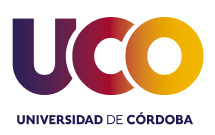Self-healing, Multifunctional, Advanced Repair Technologies IN Cementitious Systems (H2020-MSCA-ITN-2019-860006).
SMARTINCS is a Marie Sklodowska-Curie Action started in December 2019 dealing with the implementation of new life-cycle thinking and durability-based approaches to the concept and design of concrete structures. Concepts such as self-healing concrete, repair mortars and grouts appear as key enabling technologies. In SMARTINCS, 15-entrepreneurial early-stage researchers will be trained in the development of innovative, multifunctional self-healing strategies for new concrete structures, and in the implementation of advanced repair technologies for repairing existing concrete infrastructures. In the Project, research institutes, pioneers in smart cementitious materials, works together with leading companies along the SMARTINCS value chain, and with certification and pre-standardization agencies. The collaborative efforts of all partners have two main focuses:
- Develop sustainable and durable concrete solutions for new and existing structures.
- Scientifically substantiate the durability, sustainability and robustness of the developed self-healing cementitious materials.
The planned activities within the ETN divided in a structure with 3 – work package structure. Training is given to the early stage researchers by their individual PhD projects which all fit within the scientific work packages 1-4, dealing with improved self-healing concrete (WP1), advanced local (self-)repair (WP2), durability, service life and sustainability (WP3) and technology transfer and entrepreneurship (WP4).
General objectives
Three main scientific objectives can be highlighted for SMARTINCS Project:
(i) To develop and model innovative self-healing strategies for bulk and local application, including optimization of mix designs and development of multi-functional self-healing agents with attention to cost, applicability and environmental impact.
(ii) To scientifically substantiate and model the durability of self-healed concrete and repaired systems for an accurate service life prediction and to integrate self-healing into innovative service-life based structural design approaches to foster the market penetration through an innovative life-cycle thinking.
(iii) To quantify and prove the eco-efficiency of newly developed smart concrete / mortars by life cycle assessment modelling
Role of the University of Cordoba
The University of Córdoba is responsible for the ESR 6 Project “Crystalline self-healing technology for non-shrinkage cementitious grouts in non-structural applications”, mainly contributing to the WP2. The main objective of UCO’s Project is the ad-hoc design of multifunctional non-shrinkage cementitious gouts with enhanced performance in specific non-structural applications:
- Grouts for pre-stressing strands incorporating corrosion inhibitors.
- Cementitious coatings with non-shrinkage crystalline grouts for improving the corrosion resistance of steel rebars.
- Cementitious non-shrinkage grouts incorporating antimicrobial activity based on the technology of Layered Double Hydroxides (LDH).
To accomplish these objectives, a collaborative work with other universities (PoliMi, UCam), and with the industry (Penetron) will be carried out.
Supervisor: Mercedes Sánchez e-mail: msmoreno@uco.es
Project website: https://smartincs.ugent.be/index.php

